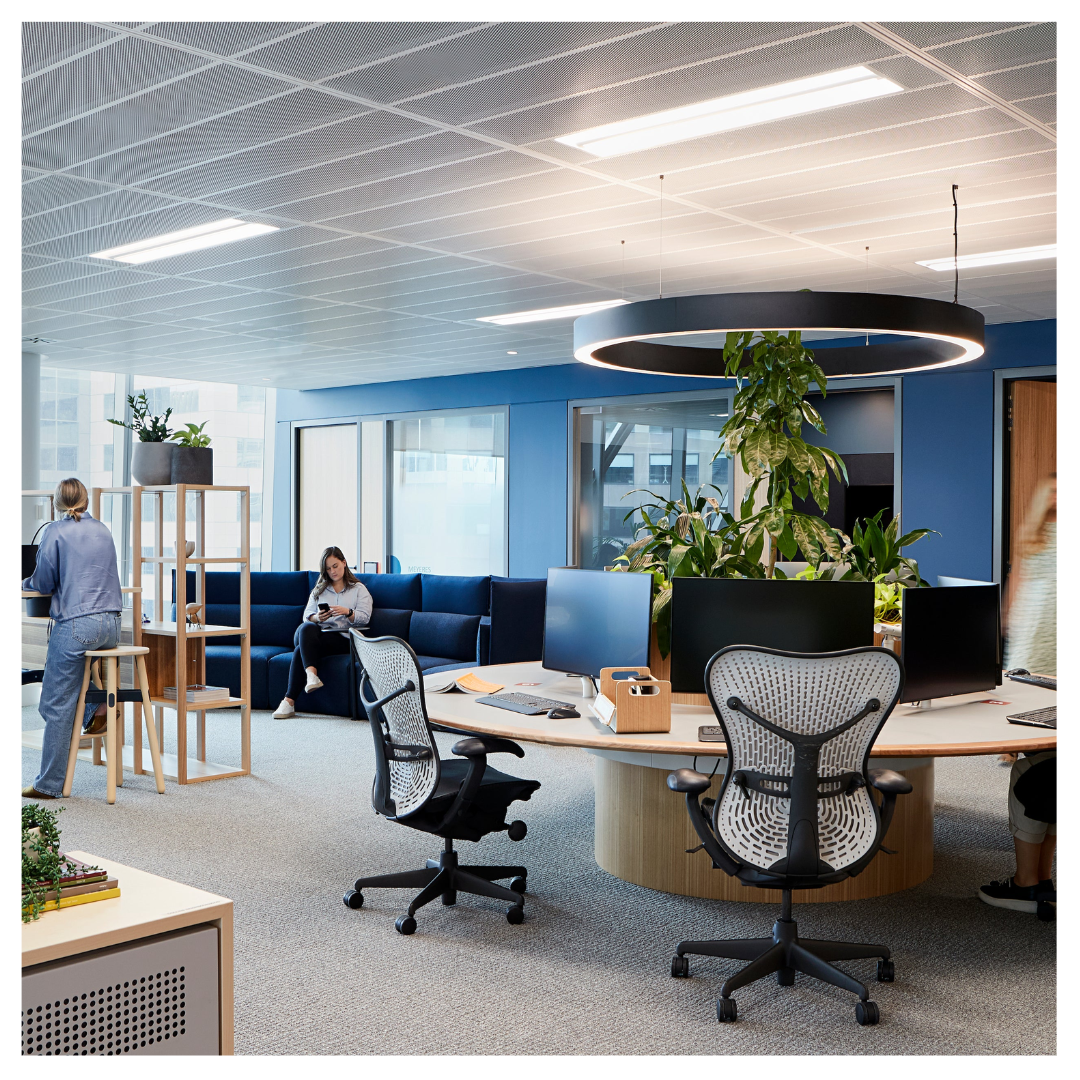A little introduction to set the mood right.
LET GET IT STARTED.....
As you embark on designing or updating your office space, remember to tailor these principles to align with the unique needs and culture of your organization. Create an environment that promotes not just work, but a holistic sense of well-being for your team. Read on to learn more…
Solution 1
NATURAL & WELL DESIGNED ARTIFICIAL LIGHT
Exposure to natural light improves mood, alertness, and overall well-being. Maximizing exposure to natural light supports circadian rhythms, positively influencing mood and maintaining energy levels. Well-designed lighting, including task lighting, reduces eye strain and supports sustained focus. Positioning workstations to maximize exposure to natural light and using adjustable lighting can accommodate individual preferences, which can help improve moods and consequently improve efficiency.
Which then leads us to…
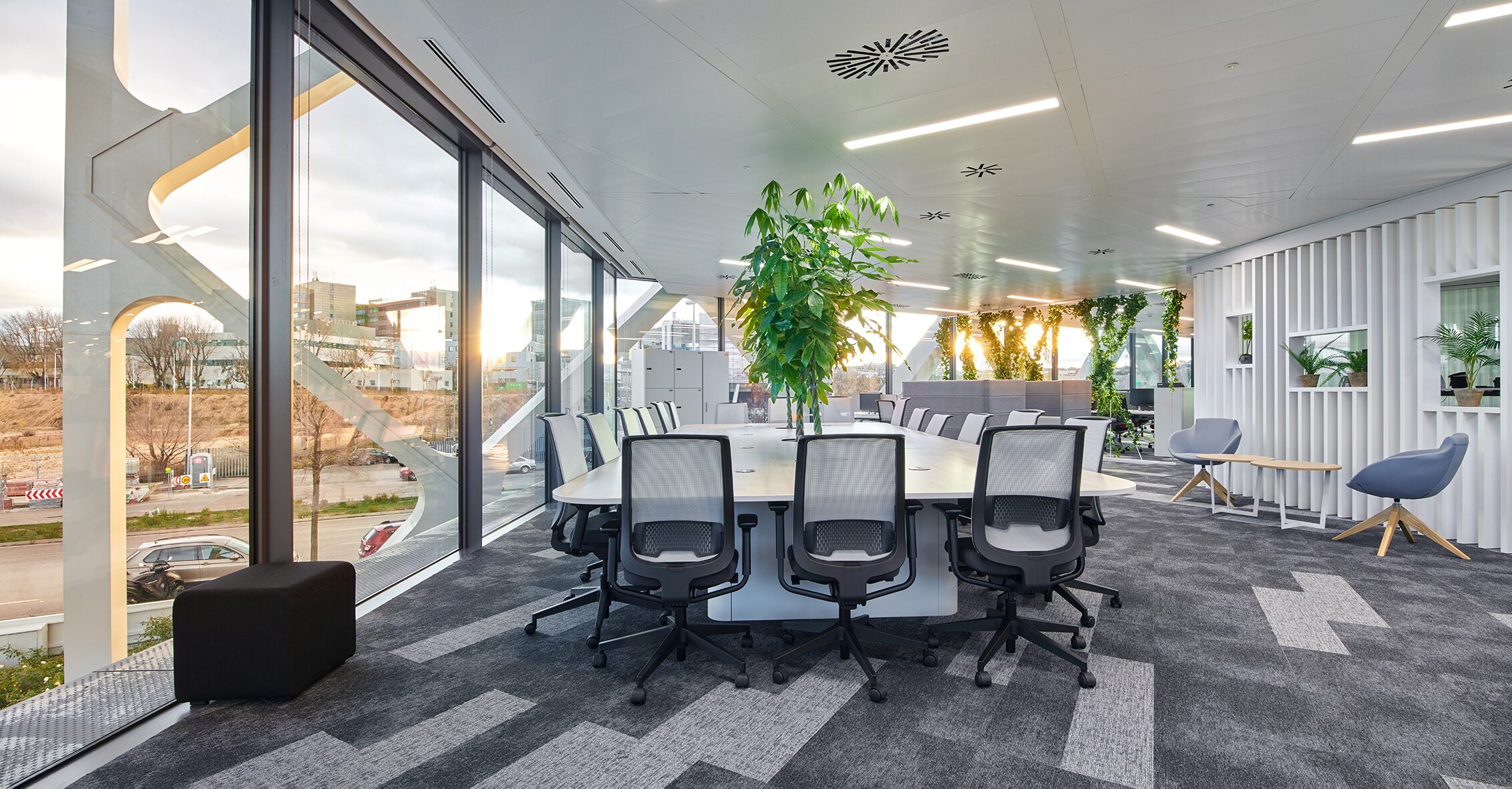
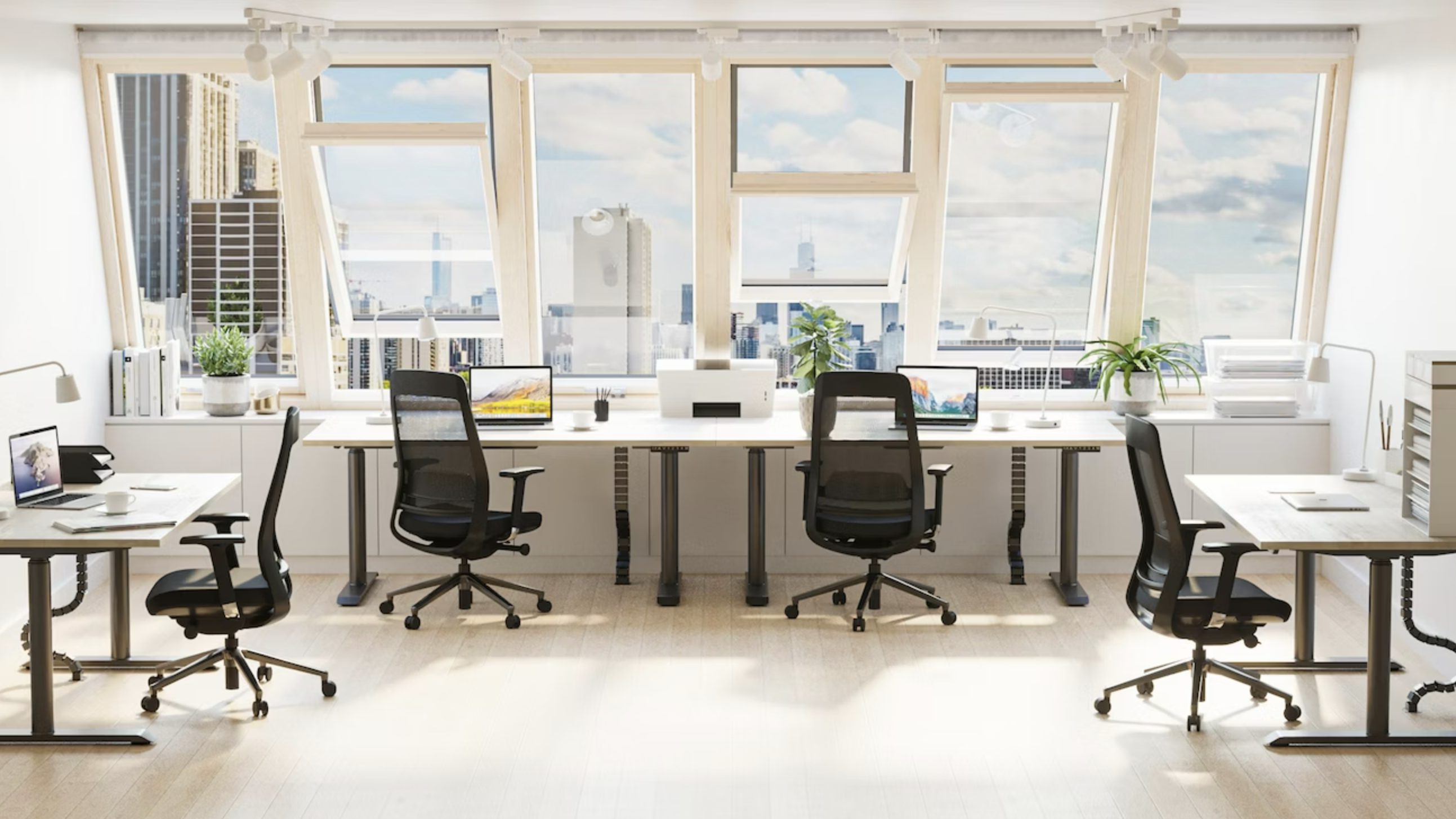
Solution 2
FLEXIBLE & ERGONOMIC FURNITURE
Ergonomic chairs, sit-stand desks, and adaptable workstations contribute to employee comfort, reducing the risk of injuries and supporting sustained productivity. Providing a variety of seating options can encourage employees to personalize their workspaces. Flexibility in workstations accommodates various work styles, contributing to individual and team productivity.
Solution 3
COLOUR PSYCHOLOGY & VISUAL ELEMENTS
Thoughtful use of colors influences mood and behavior, creating a positive work environment. Aligning color schemes with branding, positively affects employee engagement and productivity.
Understanding workforce preferences and cultural associations when selecting colors can benefit employees.
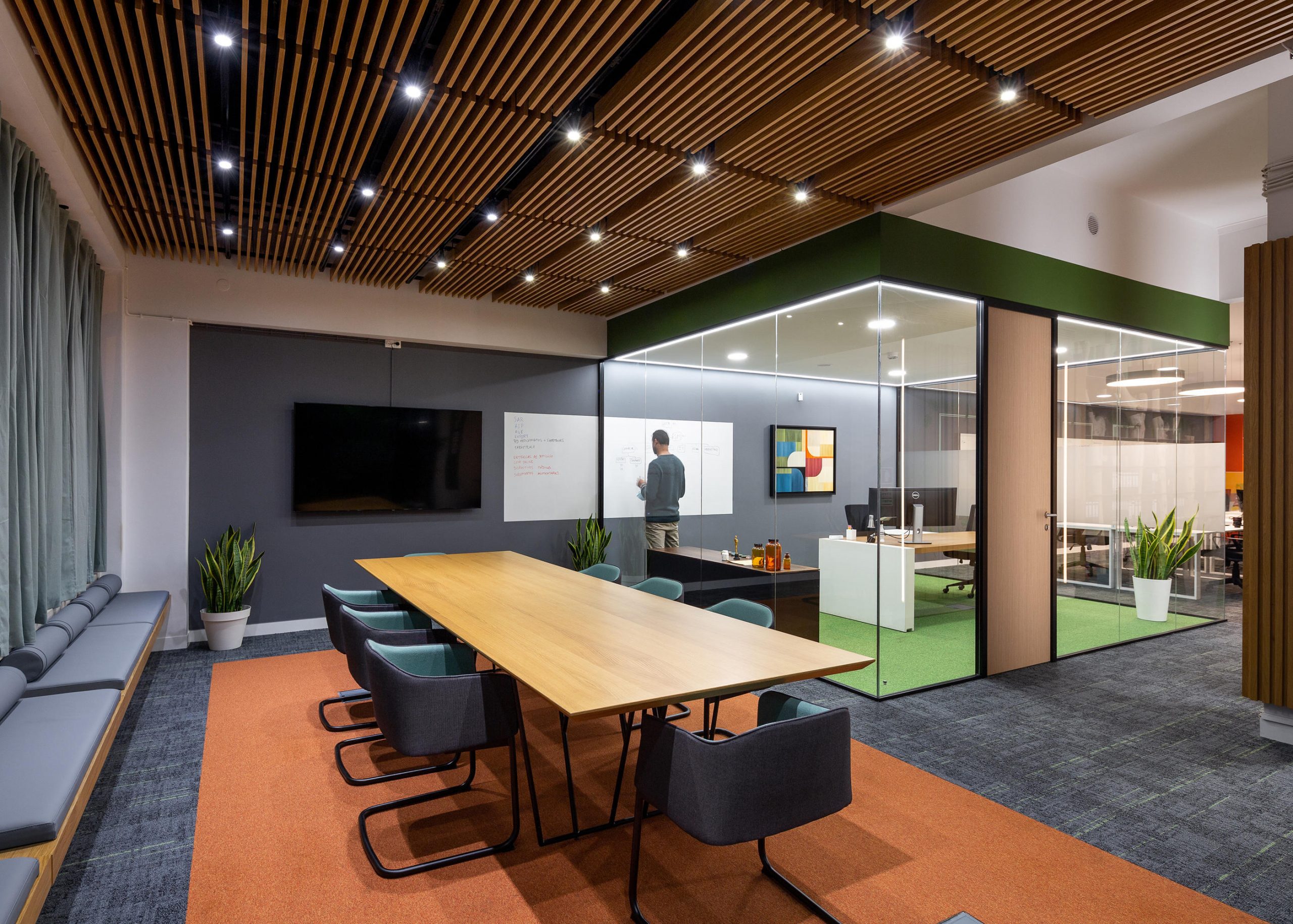
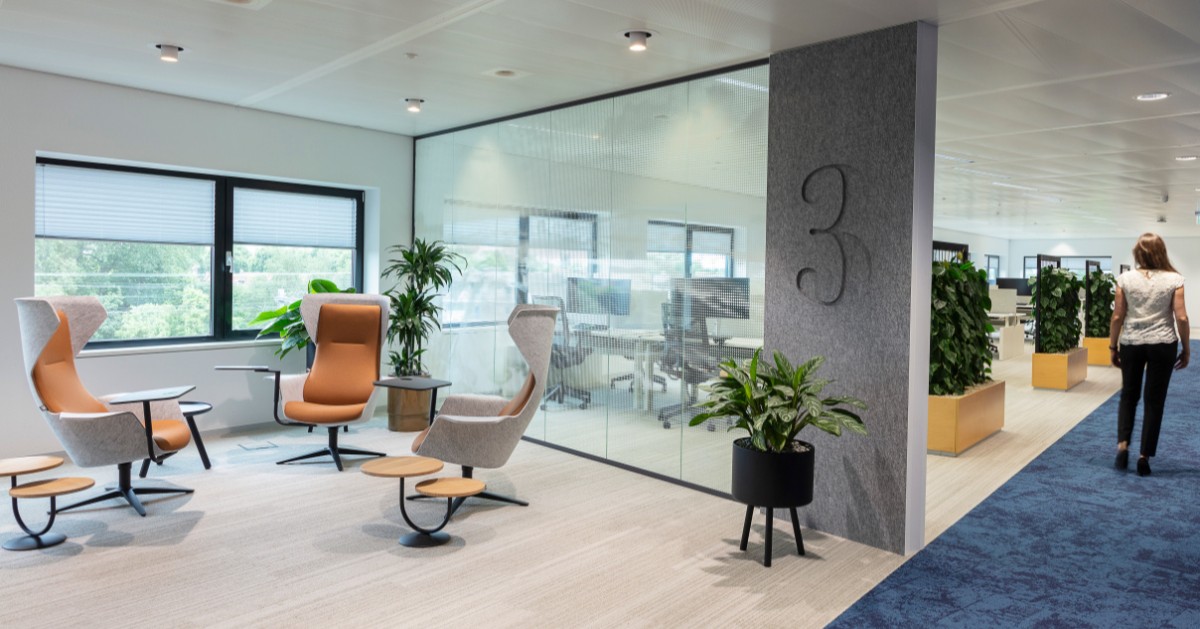
Solution 4
ZONING SPACES
– Quiet Zones: Establish areas for focused individual work where minimal noise is tolerated. Consider providing soundproofing elements and comfortable seating.
– Collaborative Areas: Design spaces that encourage teamwork, brainstorming, and spontaneous interactions. Ensure these spaces are equipped with tools and technology to facilitate group work.
– Recreation Areas: Introduce zones for relaxation and recreation, promoting a healthy work-life balance. Incorporate comfortable seating, games, or even a small lounge with plants for a rejuvenating atmosphere.
Solution 5
BIOPHILIC DESIGN & GREENARY
Introducing plants and natural elements reduces stress, increases productivity, and improves air quality, fostering a sense of well-being. Choosing low-maintenance plants and integrating nature-inspired elements throughout the office space will create a stress reducing work space.

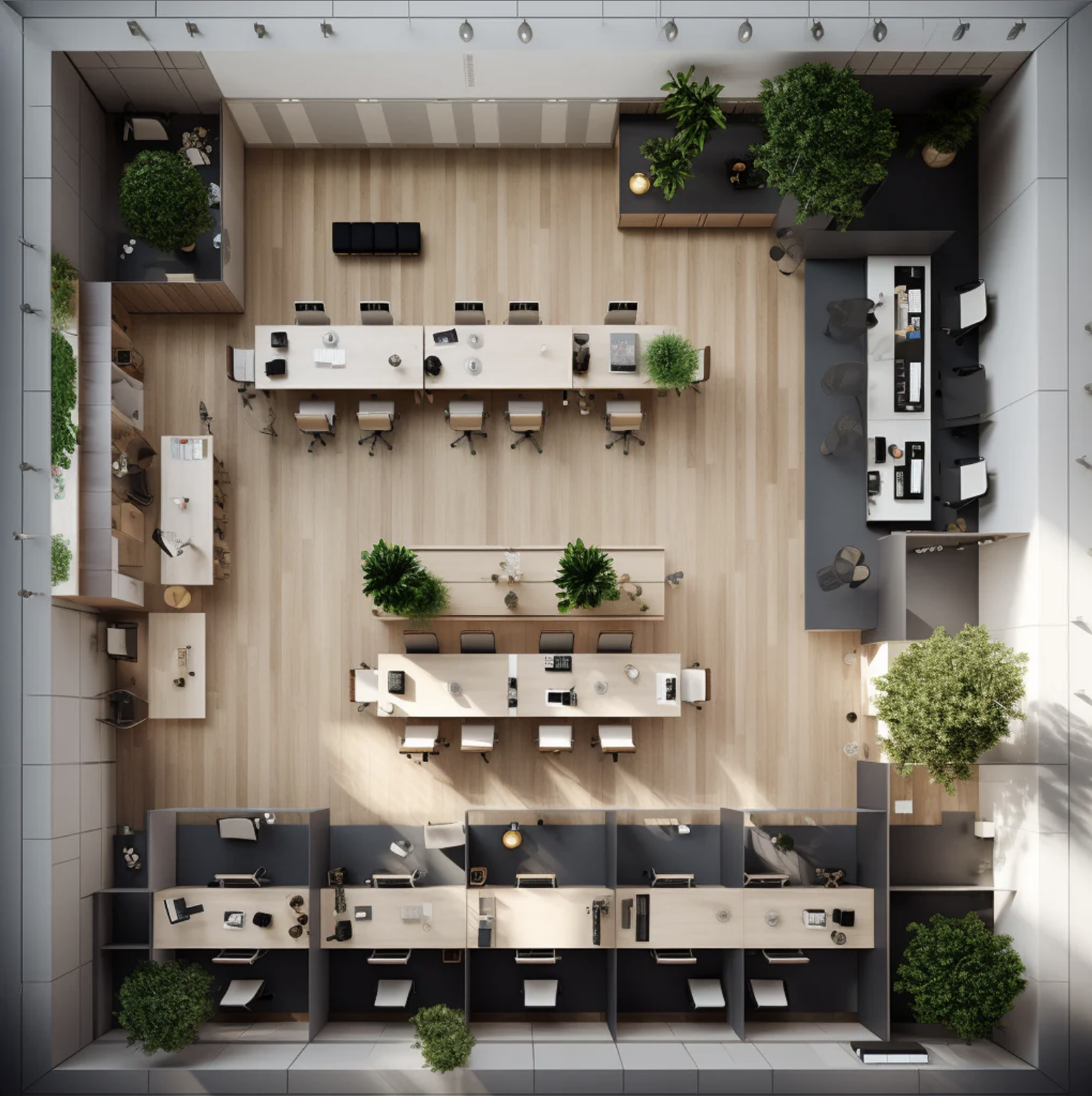
Solution 6
OPEN LAYOUT & COLLABORATIVE SPACES
Open layouts and collaboration spaces encourage teamwork, spontaneous interactions, and idea-sharing. This fosters creativity and problem-solving. When you balance openness with designated quiet areas it ensures focused work and prevents distractions.

